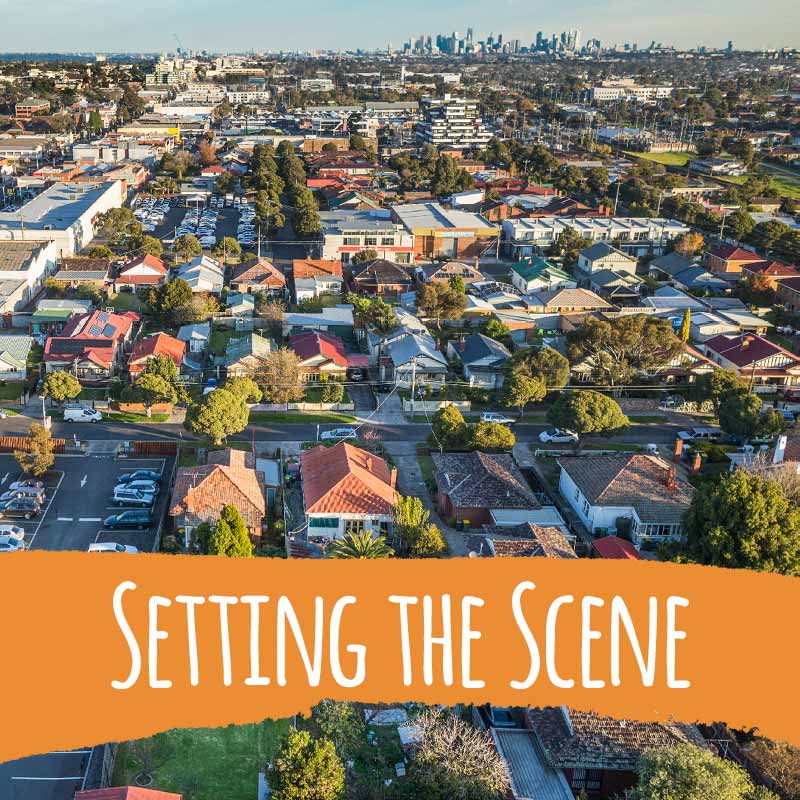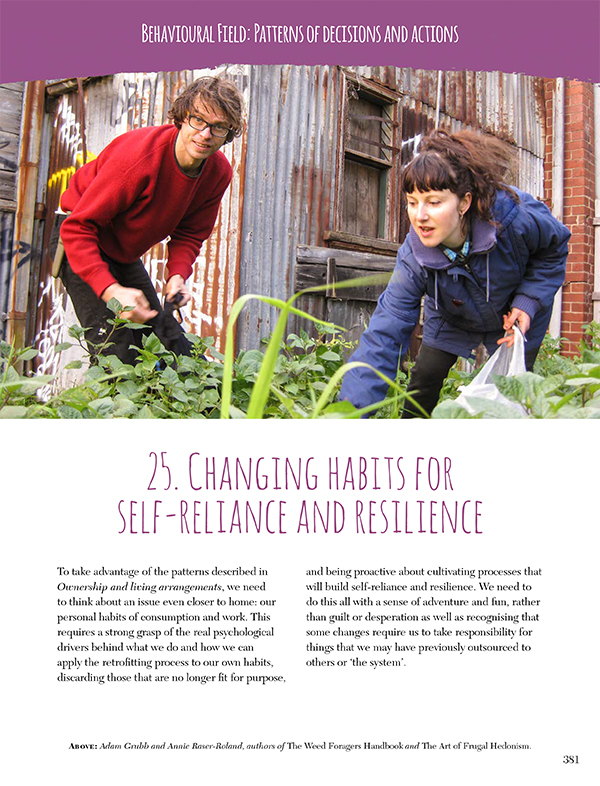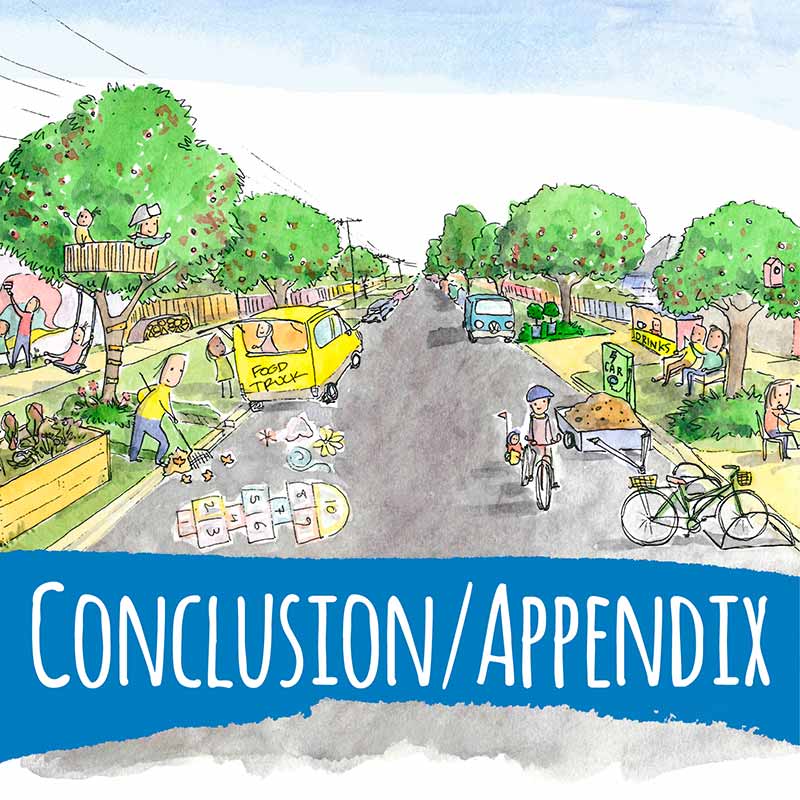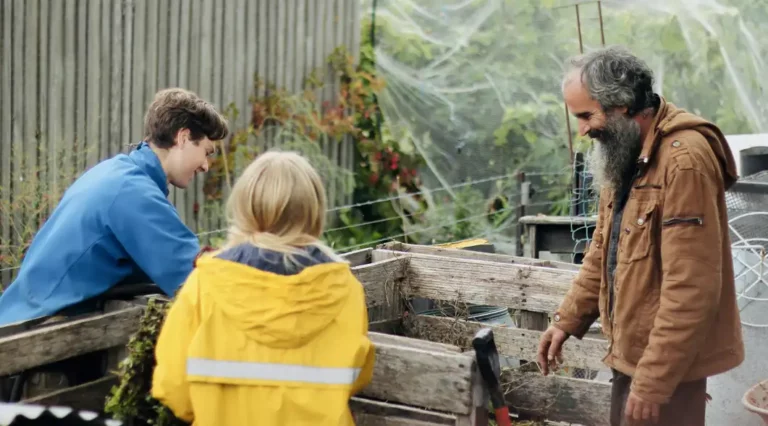Setting The Scene


Setting the Scene Introduction
1. Key challenges and retrosuburban responses
 As someone who has spent a lifetime thinking about the future while managing to live a fulfilling life, I see some big challenges that ordinary Australians will have to face in the near future – the assumptions I base these on are discussed below. The main challenges are:
As someone who has spent a lifetime thinking about the future while managing to live a fulfilling life, I see some big challenges that ordinary Australians will have to face in the near future – the assumptions I base these on are discussed below. The main challenges are:
- the collapse of the financial and property bubble of recent decades
- rising costs and/or shortages of energy, food and other basic needs
- worsening natural disasters
driven by climate change.
These challenges will undermine the capacity of governments and corporations that most people have relied upon for the majority of their wants and needs over the recent decades of affluence. We will all have to be more self- and collectively reliant!
In this chapter
- Finance and property bubble
- Rising costs and shortages
- Climate chaos
- Energy descent future
- My assumptions
- Why suburbia?
- Why retrofitting?
- Permaculture powered
retrosuburbia - Recreating the commons
- Resilience; the new sustainability buzzword
Resources
Nicole Foss’s The Automatic Earth website. The ‘Primer Guide’ is a good place to start and has links to other articles arranged by topic.
Power of community: How Cuba survived peak oil (The Community Solution, dir. Faith Morgan, 2006). Documentary on Cuba’s adaptations to energy descent precipitated by isolation and trade embargos, as well as an overview of the Peak Oil concept.
Holmgren’s Future Scenarios website or book exploring the likely cultural, political, agricultural, and economic implications of peak oil and climate change.
Other relevant Holmgren essays include:
‘Futures framework for RetroSuburbia’ (2017)
‘Money vs fossil energy: the battle for the control of the world’ (2010)
‘The household level counts’ (2013)
‘Crash on demand: welcome to the
‘A history from the future’ (2016)
A Pattern Language (1977) Christopher Alexander, Sara Ishikawa & Murray Silverstein with Max Jacobson, Ingrid Fiksdahl-King and Shlomo Angel, Oxford University Press, Oxford
John Michael Greer writes extensively about energy descent futures. See his website for essays, podcasts
Prosperous Descent: crisis as opportunity in an age of limits, Samuel Alexander’s 2015 book of collected essays on ‘degrowth’ – its inevitability and opportunities; lots of academic references for further reading (Melbourne Simplicity Institute, 2015). For an introduction to Alexander’s writing see
‘Life in a “degrowth” economy and why you might actually enjoy it’
The Transition Handbook: creating local sustainable communities beyond oil dependency, Rob Hopkins’ classic text on the transition movement with strategies for action in and beyond the household (Finch Publishing, 2009)
Links
These links are taken directly from the footnotes in the book – we have put them here for easy access when reading the book. It is best if they are viewed in the context of the chapter.
ecosophia.net John Michael Greer, prolific and influential writer on energy descent futures
retrosuburbia.com/reading Holmgren ‘Futures framework for retrosuburbia’
retrosuburbia/book/1-6 Holmgren ‘Crash on demand: welcome to the brown tech future’
retrosuburbia.com/book/1-6 Nicole Foss’s ‘The Automatic Earth Primer Guide 2017’
retrosuburbia.com/book/1-10 ‘Permaculture ethics’
retrosuburbia.com/reading Holmgren ‘Feeding retrosuburbia: from
retrosuburbia.com/book/1-21 Simon Fairlie ‘A short history of enclosure in Britain’
retrosuburbia.com/reading Holmgren ‘A History from the future’
2. Aussie St: the past and future of suburbia
 Aussie St is my way of illustrating both the changes that have occurred in suburbia over many
Aussie St is my way of illustrating both the changes that have occurred in suburbia over many
In this chapter
- 1950s Golden age of suburban growth and
baby boom 1960s and 70s Rising affluence and additions1980s and 90s Aging and infill2000s Permaculture retrofit2020s Second great depression
Resources
In June 2019 David presented Aussie St in Morwell, Victoria, which you can watch here. Or check our events page for an Aussie St presentation near you.
3. Where and how we live
 This chapter provides you with an overview of the largely non-living patterns of land, Many of us who love to tinker with our housing, or husband abundance from our gardens, can easily get carried away with all the opportunities to jump into the details of more sustainable and resilient living by changing our environment, without paying enough attention to the larger context created by personal relationships, health, work, family and community. If we can better see how to apply the retrofitting, redesign and reinventing processes to household location, lifestyles
This chapter provides you with an overview of the largely non-living patterns of land, Many of us who love to tinker with our housing, or husband abundance from our gardens, can easily get carried away with all the opportunities to jump into the details of more sustainable and resilient living by changing our environment, without paying enough attention to the larger context created by personal relationships, health, work, family and community. If we can better see how to apply the retrofitting, redesign and reinventing processes to household location, lifestyles
In this chapter
- Work/life balance
- Household formation and location matrix
- Conclusion
Resources
The Art of Frugal Hedonism: a guide to spending less while enjoying everything more (Annie Raser-Rowland with Adam Grubb 2016, Melliodora Publishing) A fun and informative book doing what the subtitle suggests: providing inspiration for a better life with less stuff, money
Changing Gears: a pedal-powered detour from the rat race (2013, Affirm Press) Greg Foyster’s account of his and his partner’s cycling trip from Melbourne to Cairns is not only a great account of ‘Mobile minimalism’ but also gives insights into sustainable and resilient ways of life through the people they visit.
Small is Necessary: Shared living
Rosemary Morrow’s A Good Home Forever: Downsizing for the future (ebook) outlines various considerations in deciding whether to stay where you are or
Links
These links are taken directly from the footnotes in the book – we have put them here for easy access when reading the book. It is best if they are viewed in the context of the chapter.
retrosuburbia.com/book/3-3 Wilson ‘How big is a house? Average house size by country’
retrosuburbia.com/book/3-4 Australian Bureau of Statistics ‘Households and families’
retrosuburbia.com/book/3-9 Australian Bureau of Statistics ‘Moving house’
retrosuburbia.com/case-studies Rosemary Morrow’s ‘A Good Home Forever’





